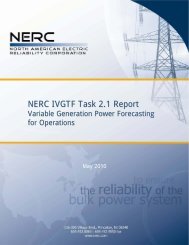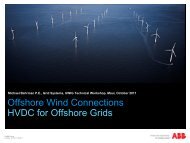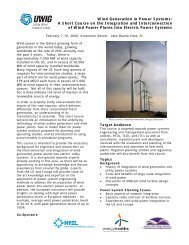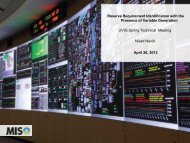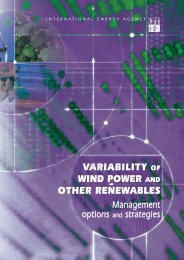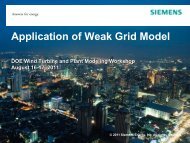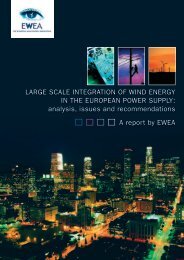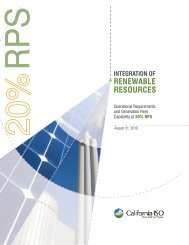MISO Energy Storage Study Phase 1 Report - Utility Wind ...
MISO Energy Storage Study Phase 1 Report - Utility Wind ...
MISO Energy Storage Study Phase 1 Report - Utility Wind ...
You also want an ePaper? Increase the reach of your titles
YUMPU automatically turns print PDFs into web optimized ePapers that Google loves.
ENERGY STORAGE TECHNOLOGIES<br />
The Iowa Stored <strong>Energy</strong> Park Case <strong>Study</strong> 9<br />
The Iowa Stored <strong>Energy</strong> Park Agency (ISEPA) developed a CAES proposal for a 270 MW plant<br />
located in Dallas Center, Iowa, in 2010-11 due in service during 2015. The plant, however did<br />
not proceed owing to problems with the rate that the compressed air could be extracted from the<br />
geological cavern. Before the project ended, however, analysis was carried out to determine plant<br />
economics. This economic analysis informs the <strong>Energy</strong> <strong>Storage</strong> <strong>Study</strong> because ISEPA is located<br />
within the <strong>MISO</strong> footprint and represents 57 <strong>MISO</strong> member utilities.<br />
The ISEPA scheme relied initially on harnessing low cost off-peak wind power and reselling that<br />
power during peak hours at higher prices to provide intrinsic value. However, economics<br />
analysis showed that the proposed CAES plant procured 20-30 percent of revenues from<br />
extrinsic value by providing contingency reserves and ramping services. The ISEPA economics<br />
study looked at forecast <strong>MISO</strong> market prices for energy and reserves, from 2015 to 2034. The<br />
plant design included a very fast 10 minute ramp rate from cold steel to full 270 MW load and a<br />
very low 15 percent minimum output (allowing greater down ramping than other <strong>MISO</strong><br />
generation units). The plant capital cost was estimated to be $1547 /KW and higher than an<br />
equivalent size combined cycle ($1205 KW) or a combined cycle gas turbine ($805/KW) but<br />
producing similar benefits (see Table 3-2).<br />
3-8<br />
Table 3-2: ISEPA Net Benefit CAES Plant Economic Comparison (Source ISEPA)<br />
The ISEPA economic analysis indicated plant benefit would reduce by $140 KW if cap and trade<br />
markets were introduced for carbon emissions in the <strong>MISO</strong> market, because the latter would<br />
increase off-peak prices relative to on peak and thus reduce energy arbitrage. The ISEPA project<br />
“lessons learned” indicate that the plant would benefit from improved treatment of energy<br />
storage in the <strong>MISO</strong> ASM. The study concluded that current <strong>MISO</strong> tariffs do not fully recognize<br />
the value of fast ramping resources and generally tend to undervalue ancillary services. In<br />
particular, CAES would benefit from relaxing spinning reserve requirements during shortage<br />
9 www.isepa.com




